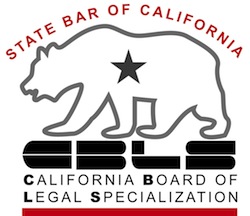The mortgage modification process has long felt like a match between David and Goliath.
Homeowners have visions of negotiating with their lenders only to find that it’s a take-it-or-leave it proposition.
All of the cards, and all of the choices, seemed to lie with the lender.
The 9th Circuit Court of Appeals just evened the odds a bit, holding that the lender had to offer a permanent loan modification after the borrower successfully performed on a trial modification or tell them why not.
No permanent modification offered
The court’s opinion in Corvello v. Wells Fargo, addressed two similar fact patterns where Wells Fargo, doing business as the servicer America’s Servicing Company, had offered the homeowners a trial payment plan.
The lender represented that if the borrower made the trial payments and continued to be eligible, they would be offered a modification, or informed that they did not qualify.
Each homeowner alleged in their suit that they had completed the trial payments and Wells had neither offered them a permanent modification nor told them they did not qualify under HAMP.
Of course, Wells kept the trial payments. Worse, Wells foreclosed on one of the borrowers.
What the court decided
These cases got to the 9th Circuit because the trial court had dismissed the homeowners’ complaints as failing to articulate a complaint that was legally sufficient. So what was decided in Corvello is that, under the right facts, lenders who offer a trial modification are contractually obligated to follow the terms of their offer. [Isn’t that a novel approach when applied to a mortgage lender!].
The 9th Circuit followed the 7th Circuit’s decision in Wigod v. Wells Fargo Bank, N.A., 673 F.3d 547 (7th Cir. 2012).
The cases were sent back to the trial court for further proceedings. The homeowners will have to prove up the allegations made in their complaints. But the law of the case says that the trial payment plan is an enforceable contract, giving some rights to the applicant.
Banks as legal draftsmen
I got a particular thrill out of Judge Noonan’s concurrence in the decision. Addressing the bank’s offer to the borrowers he said
Read as a whole the TPP between Corvello and Wells Fargo makes no sense. It is self-contradictory.
Page one promised Corvello in two places that if his representations were accurate and if he were in compliance with the Trial Period Plan, the Lender “would provide” him “with a Loan Modification Agreement.”
Paragraph 2G stated: “the Loan Documents will not be modified unless and until (i) I meet all of the conditions required for modification; (ii) I receive a fully executed copy of a Modification Agreement and (iii) the Modification Effective Date has passed.”
Noonan went on to label Wells’ conduct as fraudulent. “The document promises a substantial benefit to Corvello if he meets its terms. The document then makes these benefits illusory because they depend entirely on the will of Wells Fargo.”
Bravo!
The mortgage modification process is David and Goliath no more. At least, in the 9th Circuit.
Image © olly – Fotolia.com






